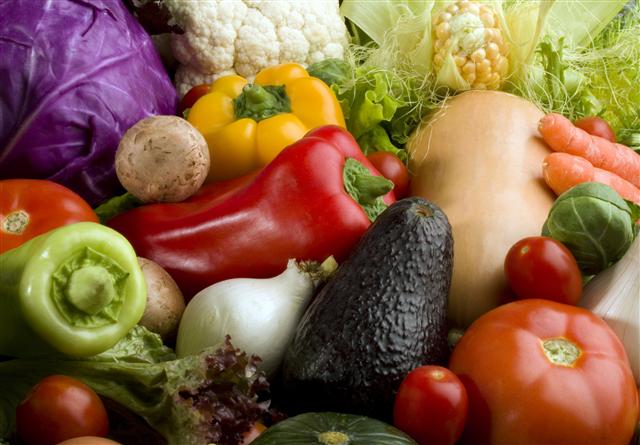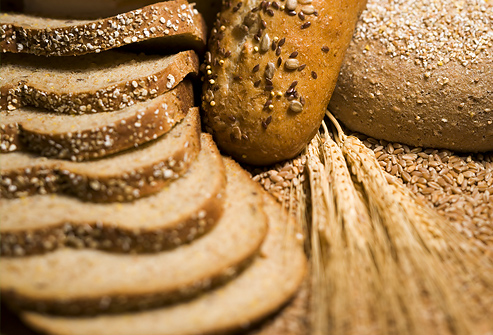


 As we discussed in Part 1 of this series, we introduced rice cereal to our baby daughter at six months. Within a week, she started to get sick whenever she ingested it. After initially thinking her illness was caused by some spoiled milk, a dirty bottle, or possibly a virus, we pretty quickly identified the rice cereal as the apparent root cause.
As we discussed in Part 1 of this series, we introduced rice cereal to our baby daughter at six months. Within a week, she started to get sick whenever she ingested it. After initially thinking her illness was caused by some spoiled milk, a dirty bottle, or possibly a virus, we pretty quickly identified the rice cereal as the apparent root cause.
Upon our return to Phoenix from our Santa Fe vacation, we once again consulted with our primary pediatrician. Her feedback was that rice is typically considered the most neutral, hypoallergenic cereal available for babies…especially since it is gluten-free. However, since rice cereal seemed to be the culprit, she advised us to give oat cereal a try instead to see if our daughter would do better with that. We tried that the next day, and again experienced the same excruciating result. Our daughter gobbled up the oat cereal paste, and then about three hours later proceeded to vomit for about three hours. At that point, we knew for sure that something definitely was not right.
We consulted again with our pediatrician. Her latest advice was to just avoid grains all together for a while. Both my wife and I quickly agreed, having already arrived at this obvious conclusion prior to our visit. However, now we were even more perplexed and curious as to what was going on inside our beautiful daughter. Was this “condition” she was experiencing something temporary? Was it being caused by something more serious? Was this something she (we) was going to have to deal with for the rest of her life? These were all questions that were hanging out there, and we needed some answers. Now what?
After some further discussion with our pediatrician, and even though rice cereal is gluten-free, we agreed to do a blood test for celiac disease. According to Mayo Clinic, celiac disease is a digestive condition triggered by consumption of the protein gluten, which is primarily found in bread, pasta, cookies, pizza crust and many other foods containing wheat, barley or rye. People with celiac disease who eat foods containing gluten experience an immune reaction in their small intestines, causing damage to the inner surface of the small intestine and an inability to absorb certain nutrients. Unfortunately, there is no cure for celiac disease and people with the disease are forced to manage their lifestyle and dietary consumption throughout their lifetime. Fortunately, celiac disease and other gluten-related digestive conditions have led to the fairly wide availability of a variety of gluten-free lines of food products and ingredients.
After waiting for about a week or so, our pediatrician informed us that the test for celiac disease had come back negative. This did not completely rule that out, due to our daughter’s young age, but it did reduce the likelihood that celiac was the culprit. Okay…now what? Once again, we consulted with our pediatrician to discuss other possible causes or conditions. Food allergies were considered to be the other most likely cause of our daughter’s grain issues. Childhood allergies have received much press in recent years, as studies have shown possible connections between food allergies and a pretty wide range of common childhood illness, from ear infections to general irritability and colic to ADHD. In many cases, children outgrow these allergies by 3 to 5 years of age, and the best way to deal with them is to just avoid the foods causing the problems. Rather than go through a full battery of allergy tests at such a young age (~8 mths old), we decided to just avoid grains for a while and focus on introducing other foods that would satisfy her nutritional needs for the foreseeable future. This would certainly pose some challenges when mealtime rolled around each day…and especially when it came to snacks (no Cheerios, crackers, bread, cookies, cake, etc.)…but it was certainly something we felt we could manage…for now.
Fast forward eight months. Our daughter is now almost 16 months old and we have learned to manage her dietary restrictions quite well by closely monitoring product ingredients and watching carefully for crumbs on our floors. A few weeks ago, we decided to investigate some more to try to find other possible causes of the grain intolerance/allergy/reaction with which we are dealing. After going in a few different directions with our research, we stumbled onto something called FPIES. FPIES is short for Food Protein-Induced Enterocolitis Syndrome. FPIES is a severe, cell-mediated gastrointestinal food hypersensitivity typically provoked by cow’s milk, soy, grains, poultry, and/or some vegetables. It is commonly characterized by profuse vomiting and diarrhea. As I read through descriptions of the condition and read through details of how FPIES has affected other young children and babies, I started to get goosebumps as I realized that we had finally found some of the answers we were looking for. We visited an allergy clinic this week and confirmed our FPIES suspicions with the doctor, who was familiar with the condition and was in agreement with our discovery.
Check back soon for more details on FPIES, and also for more information on the foods and snacks that have helped us to manage our daughter’s dietary restrictions and keep her healthy.
If you have any questions about how we are dealing with FPIES, please let us know…and please join in the conversation on our website, on Twitter, and on Facebook to share your stories of dealing with childhood food restrictions.

No grains?? None? Uhhh…I think we have a problem.
This is Part 1 of a series describing our experiences with identifying and managing food restrictions for our baby daughter and how our journey eventually led us to the likely cause…FPIES (Food Protein-Induced Enterocolitis Syndrome).
From very early on, our daughter has been a good eater and a good sleeper. After being exclusively breastfed for her first six months (and all the way through to 12 mths), we started to introduce solid foods into her diet. Per the common recommendations, we started out with watered down rice cereal (using breast milk). Over the course of the first week or so, we gradually thickened it up to make it a little more manageable. She did okay initially, but after about ten days or so…while my wife was out of town for business (of course!)…our daughter got sick (vomitted) for pretty much the first time since her birth.
I had given her a little bit of rice cereal with her dinnertime feeding that night and put her down to bed around 6pm. Shortly before I was about to give her the last evening feeding at 9p, she proceeded to vomit all over herself and her crib. Awesome. After I got her and her crib all cleaned up, she perked up and took a full bottle, before passing out for the night. Not really sure what to make of it, the next morning at about 6:30a, I gave her another serving of rice cereal with her morning bottle and all seemed fine. Once again, shortly before her mid-morning bottle (~9a), she vomited all over herself and her crib. Now this started to worry me a bit, and after talking it over with my wife on the phone, I decided to take her to the pediatrician for a visit that afternoon.
At the pediatrician, I explained the situation and gave her as much info as I could remember regarding our daughter’s feeding schedule and the timing of the vomiting. Her response was probably one of the most common that parents will hear in this situation…that it was probably just a stomach bug. In her defense, this is probably the correct guess 98% of the time. She recommended that we avoid the rice cereal for a few days, and then reintroduce. Okay…no problem. That makes sense.
As it turns out, a few days later meant we were now on vacation in Santa Fe, New Mexico with my wife’s family. After making the eight hour roadtrip to Santa Fe and getting all settled in, we decided to try again. We offered rice cereal with a lunchtime bottle and our daughter gobbled it up. All seemed fine, so we packed up the family and headed to the historic downtown Santa Fe for lunch and a little shopping. Shortly after arriving, she began vomiting. After the third round of vomitting in less than 20 minutes, we headed back to our vacation home to get her cleaned up. She proceeded to vomit all the way home…and pretty much every 10-15 minutes…for almost three hours.
About two hours in, she was getting lethargic and was absolutely exhausted. We called our pediatrician’s answering service (of course, it was a Sunday), and explained the situation. We were told our main concern was dehydration. Since we were at a much higher altitude (7,000ft) than our home in Phoenix (1,000ft), this was even more of a concern. Ultimately, we decided to take her to a very good local hospital that had a pediatrics unit (thank you Santa Fe Christus St. Vincent!). Fortunately, while waiting nearly an hour for a doctor, she began to perk up and show signs of recovery. By the time the doctor showed up, she was starting to smile and get her color back. The doctor was a bit perplexed, but once again, we were told it was probably a stomach bug and to take a few more days off from the cereal. Since her primary nourishment was still coming from breast milk, and since we were really just getting started with “solid” food, going a few days without cereal didn’t really concern us. Again, we felt that made sense…but we were now definitely sensing that there was something more to all of this.
So, where do we go from here?
To be continued…
Be sure to also check out Part 2 of this series, and if you have any questions about how we are dealing with food restrictions, please let us know. Also, please join in the conversation on our website, on Twitter, and on Facebook to share your own stories of dealing with childhood dietary issues.

 Prior to the birth of our daughter, and over the past fifteen months since, we have received great advice and recommendations from friends and family. This website is one of the things we decided to use to share and pass on this wealth of knowledge that we have gathered. As such, we had the following books recommended to us, and we found them to be invaluable. We encourage you to pick them up at your local book store or borrow them from your local public library. Enjoy!
Prior to the birth of our daughter, and over the past fifteen months since, we have received great advice and recommendations from friends and family. This website is one of the things we decided to use to share and pass on this wealth of knowledge that we have gathered. As such, we had the following books recommended to us, and we found them to be invaluable. We encourage you to pick them up at your local book store or borrow them from your local public library. Enjoy!
Do you have other favorite books that you have found helpful and would recommend? Any thoughts on the books listed above? If so, please share and engage with our community in the comments below. Thanks!